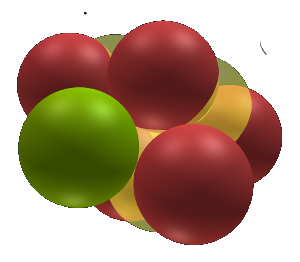Olivine from the mantle emits a large amount of electrons. Current flows in the magma of the Pacific Volcanic Belt, turning Earth. The surplus current in the magma's surroundings causes electric discharge. It is an earthquake. Rocks store electrons in dielectrics. When the electrons inside the rock increase, it will discharge.
This graph compares earthquakes of magnitude 7 or more that occurred in 2016 with LOD (length of day). As the graph goes downwards, the length of the day becomes shorter. Earth 's rotation speed increases. Much of M7 earthquake occurs when the rotation speed is fast. If the rotation speed increases, that is, as the current flowing through the Faraday motor core increases, a large earthquake will occur.
In mainstream science, the electromagnetic phenomenon in the earthquake is explained by the piezoelectric effect of the rock. When rock pressure compresses rocks, high voltage is generated. This explanation is obviously a mistake.
On January 17, 1995, Kobe City was attacked by a direct type earthquake of M 7.3. It is the Hyogo ken Nambu earthquake. The epicenter was 16 km deep in northern Awaji Island. At this time, the luminescence phenomenon was observed in the direction opposite to the epicenter, around the Ikoma mountain in Osaka.
It is thought that the basement of Osaka from Kobe is granite. It is the cause of the earthquake that the discharge occurred in the vicinity of Akashi Strait exerted a piezoelectric effect near the hypocenter. The luminescence phenomenon that occurred in Ikoma mountain near 100 km from the epicenter is a boosting phenomenon due to the piezoelectric effect.
In fact, boost transformers using piezoelectric bodies are on sale. It is an element that can increase the voltage of several volts to several hundred volts.
In the figure, the voltage applied near the Akashi Strait vibrates with lateral effect. A vertical effect appears at the far end of this piezoelectric body. Voltage of several million volts occurred in the epicenter increased to several hundreds of billions of volts due to longitudinal effect. It was seen as a light emission phenomenon.
In the Hyogo ken Nanbu earthquake, the Nojima fault moved up to 2 m. If the deformation rate of the piezoelectric body is set to 0.01% when it is 10000 V / m, in order to deform 2 m, it will suffice to apply a voltage of 2 million V to a rock with a thickness of 2 km. It is a phenomenon that the 2 million V which caused the earthquake was boosted, it reached several hundred million, billions of volts at the edge of the granite rock, causing a huge electric discharge in the air.
The luminescence phenomenon caused by the boosting effect by this piezoelectric body is also a proof that an earthquake is a discharge phenomenon. If the piezoelectric effect is a secondary phenomenon due to rock strain as in the conventional explanation, the boosting effect should not appear in a place far from the epicenter.
Also, as explained above, once a large earthquake occurs, the rocks around the epicenter are polarized. The direction of the piezoelectric body which the crystals inside the rock has by the voltage of the discharge is aligned. Polarized piezoelectric bodies are highly sensitive to voltage, so they will deform greatly even with a small voltage. This is the identity of aftershocks that continue for a while after the main shock. Polarization will be resolved after a while.
Earthquakes will increase as the Earth's rotation speed increases. Discharge inside the crust reduces the current flowing in the magma. It is adjusting the rotation speed of the Earth.
- Log in to post comments
